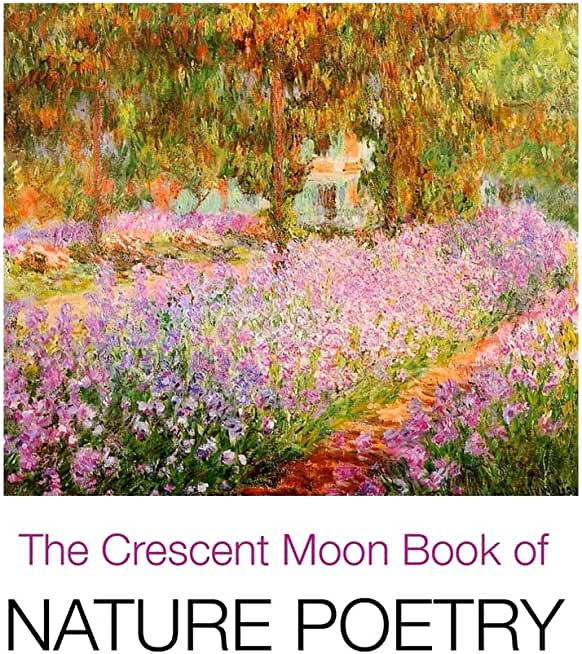
description
7THE CRESCENT MOON BOOK OF NATURE POETRYEdited and introduced by Margaret ElvyGift Book (Pocket Size = 6 x 4 inches)An anthology of great nature poems, including the Elizabethan pastorals of Edmund Spenser, William Shakespeare, Sir Walter Raleigh and Michael Drayton, and classics of nature mysticism by Geoffrey Chaucer, William Langland, James Thomson, William Blake and William Wordsworth, among others. Famous anthology pieces nestle amongst lesser known poems, including some neglected women poets, and American poets such as Amy Lowell and Emily Dickinson. The British nature poetry tradition builds on the Greek tradition of bucolic themes. The early poems of the nature poetry tradition in Britain include 'Sumer is y-cumen in', that famous hymn to the rebirth of Spring and warmth. The strength of the mediaeval rhythms continues undiminished. It is (partially) the solidity of the poetic rhythm of 'Sumer is y-cumen in' that makes the poem so successful. The rhymes, too, do not jar, as so they often do in British poetry from the Victorian era onwards. The rhymes of Langland, Chaucer and mediaeval English poets weld their verses together. In Chaucer's famous poem included here the rhyme scheme is as complex as any in troubadour or French Symbolist poetry, but Chaucer sticks to strong, basic end-words: 'blake', 'make', 'wake' and 'shake'. Just as beautiful as 'Sumer is y-comen in', though less well-known, are the many anonymous poems of nature, of the mediaeval era, of which "Lenten is come with love to towne" is such a delicious example.In nature poetry, whether of the mediaeval epoch or of contemporary poets, notions such as Spring, childhood and paradise fuse. Terms such as idyll, Arcadia, Eden and golden age are different names for a fount of feeling, to do with love/ nature/ childhood/ purity, and which lies at the heart of nature poetry. One finds archetypal imagery in the nature poetry included here. There is the wood or forest, for example, such a key part of William Shakespeare's plays. In Sir Philip Sidney's poem from The Countess of Pembroke's Arcadia, the woods are 'the delight of solitariness'. In Sir Thomas Wyatt's "I must go walk the woods so wild", the forest becomes a place of wilderness and banishment (again a common theme in Shakespeare). In Sir Walter Raleigh's 'The Nymph's Reply to the Sheepheard', we find the archetypal (indeed, stereotypical) imagery of the shepherd abroad in the countryside meeting the nymph. By the time of Henry Vaughan's poetry, God and Christianity has infused nature poetry, so that nature becomes subordinated to (and a part of) God's divine plan. But the love of nature continues unabated in the Romantic poets, in Shelley, Browning, and the Wordsworths, up to and beyond Thomas Hardy.With an introduction and bibliography. The text has been revised for this edition. A small, pocket size edition, ideal for gifts. Also available in an E-book edition. www.crmoon.com.
member goods
No member items were found under this heading.
Return Policy
All sales are final
Shipping
No special shipping considerations available.
Shipping fees determined at checkout.







